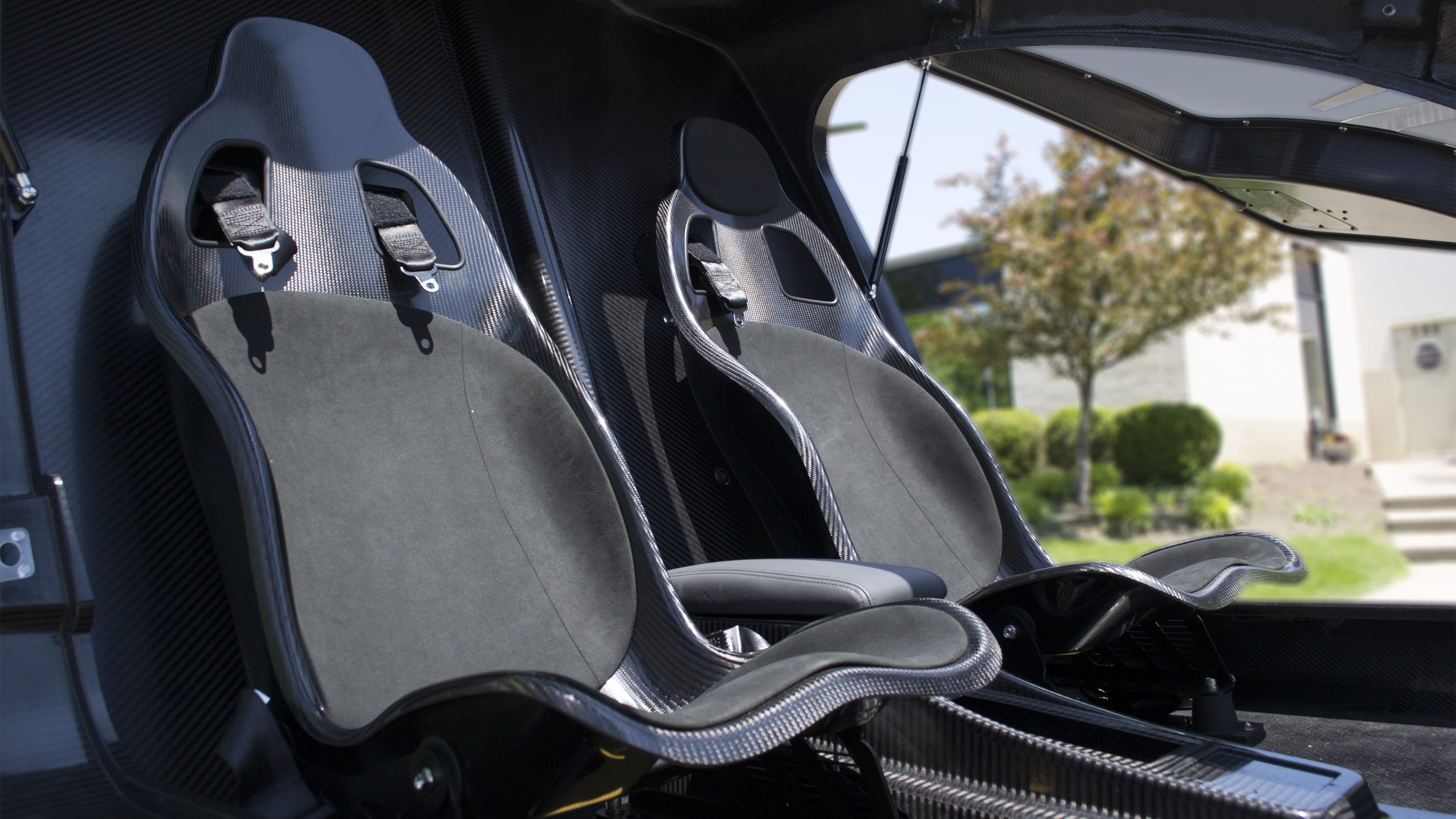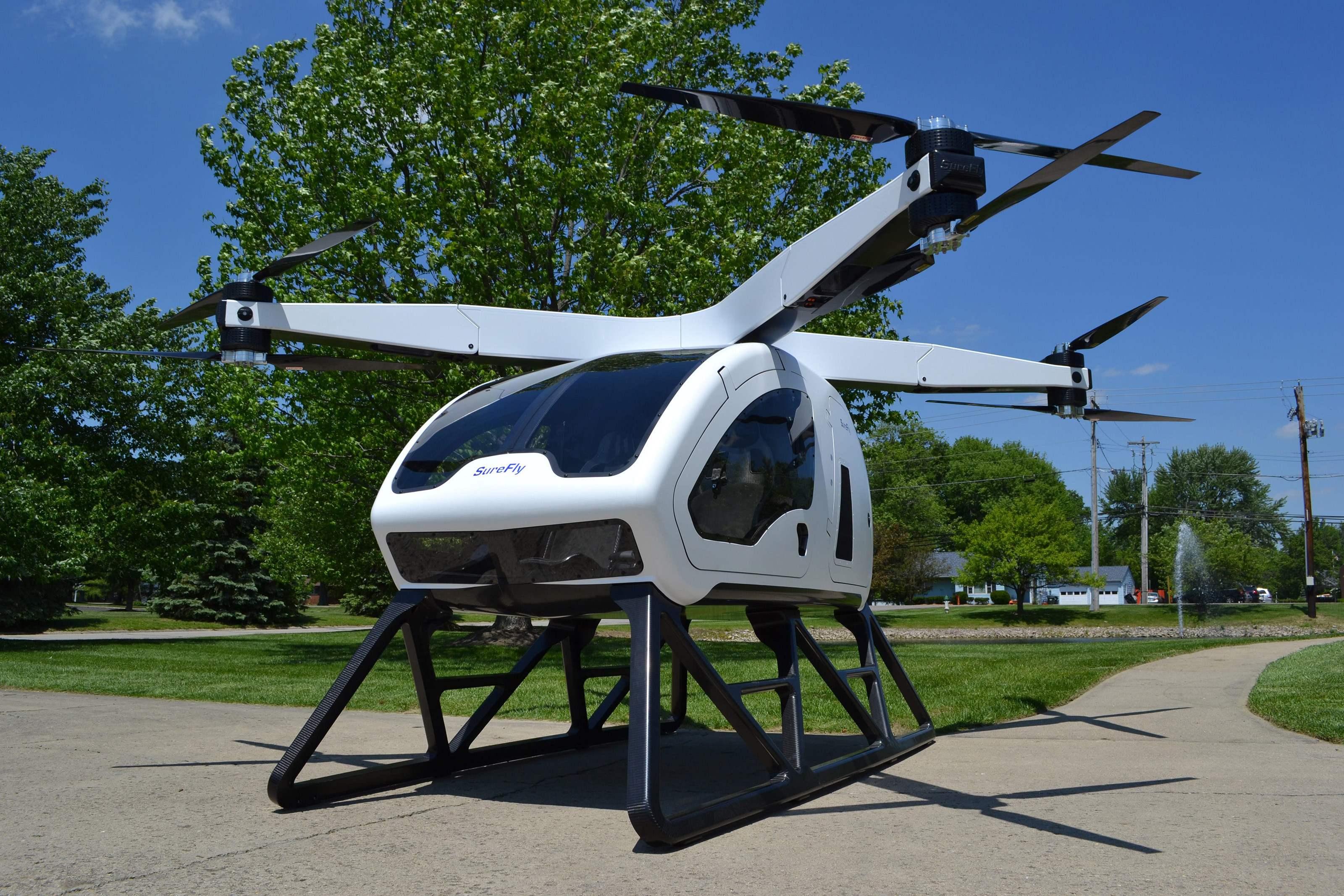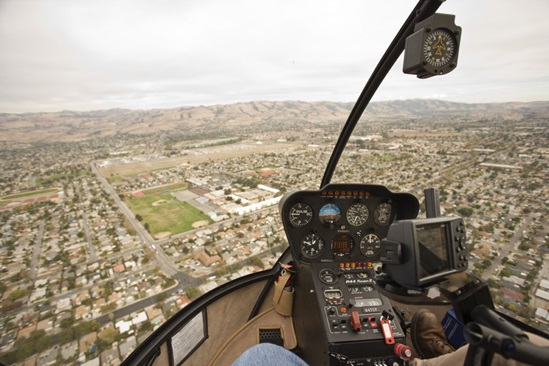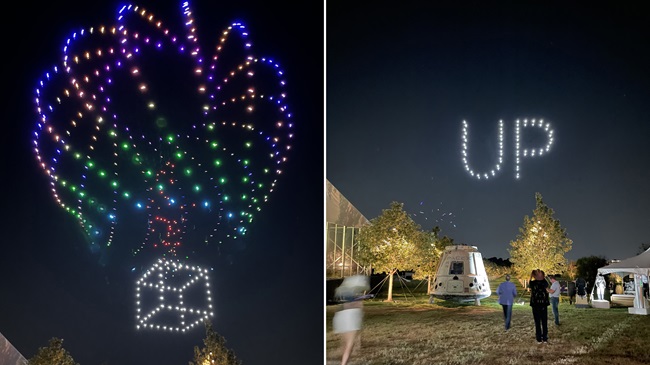SureFly melds helicopter, drone for manned flight
Now that you’re feeling comfortable with your drone piloting skills, perhaps it’s time to step up to the next level—flying yourself in a “drone.” It doesn’t quite fold into George Jetson’s briefcase, but the SureFly personal helicopter is of a similar concept.
Initial versions of SureFly will be manned, but ultimately there will be autonomous versions that could serve as air taxis, Arkus said at EAA AirVenture in July.

A highly modified 200-horsepower Honda automobile engine behind the passenger compartment drives dual generators to generate electricity that powers the eight motors, one above and below the ends of each of the four folding arms. Each motor drives a fixed-pitch rotor. Arkus said the goal was to eliminate the complex tail rotor and transitional parts of a helicopter to improve safety and simplify piloting. The mockup at AirVenture had a small joystick between the seats that would be used to control the vehicle, more like a drone than a helicopter. The folding arms allow it to fit in a garage.
In addition to driving the motors, the engine will charge a battery pack on the top that provides extra power for high-demand times, such as takeoff. The battery pack also would supply power to land the helicopter safety should the engine quit. Failure of one or even multiple motors would not cause a significant control issue, according to Arkus. Built-in gyrostabilizers would keep the vehicle in control. In addition, a ballistic parachute could be deployed if things go really bad.
SureFly has a proposed top speed of 70 mph with an endurance of about an hour and a maximum ceiling of about 4,000 feet. Empty weight is projected to be about 1,100 pounds with a max takeoff weight of about 1,500 pounds.
Among the questions to be answered are under what part of the federal aviation regulations might the aircraft be approved and what ratings must the pilot have. Could a Part 107 drone pilot, for example, fly it, or must one have a rotor rating, which is much more time consuming and expensive to acquire?
While all that gets worked out, you can get in line for one. Fully refundable $1,000 deposits are being accepted on the company website.




